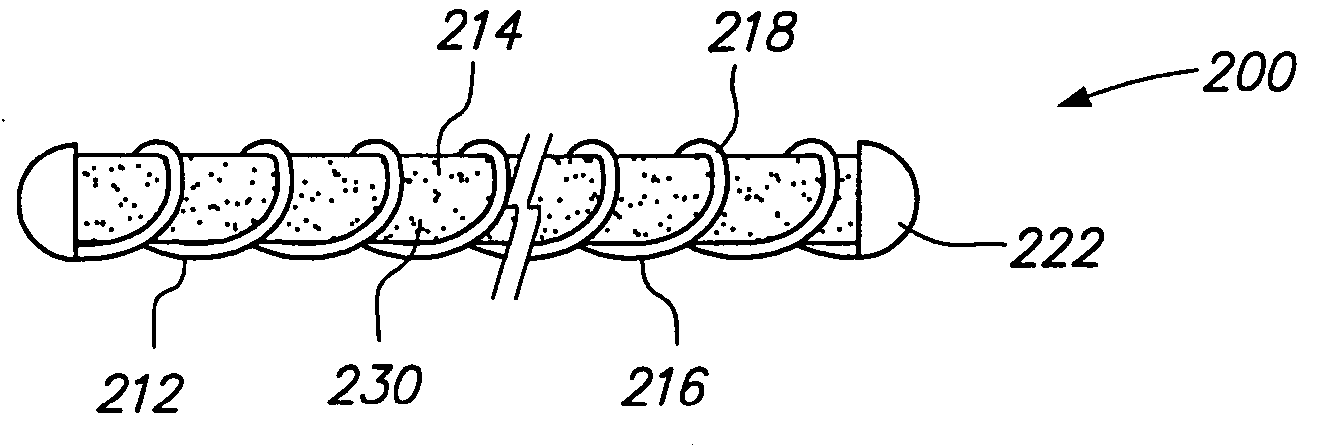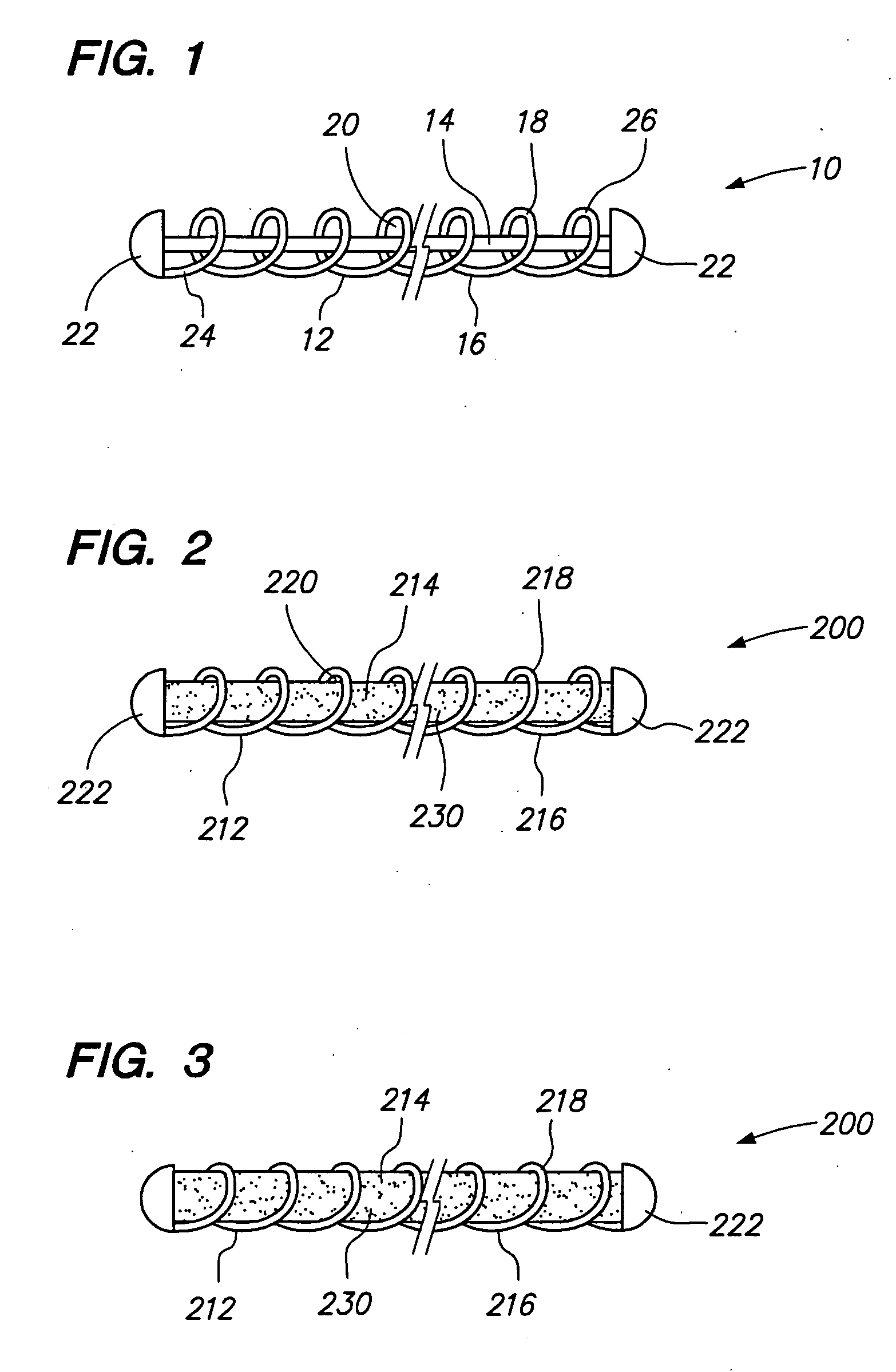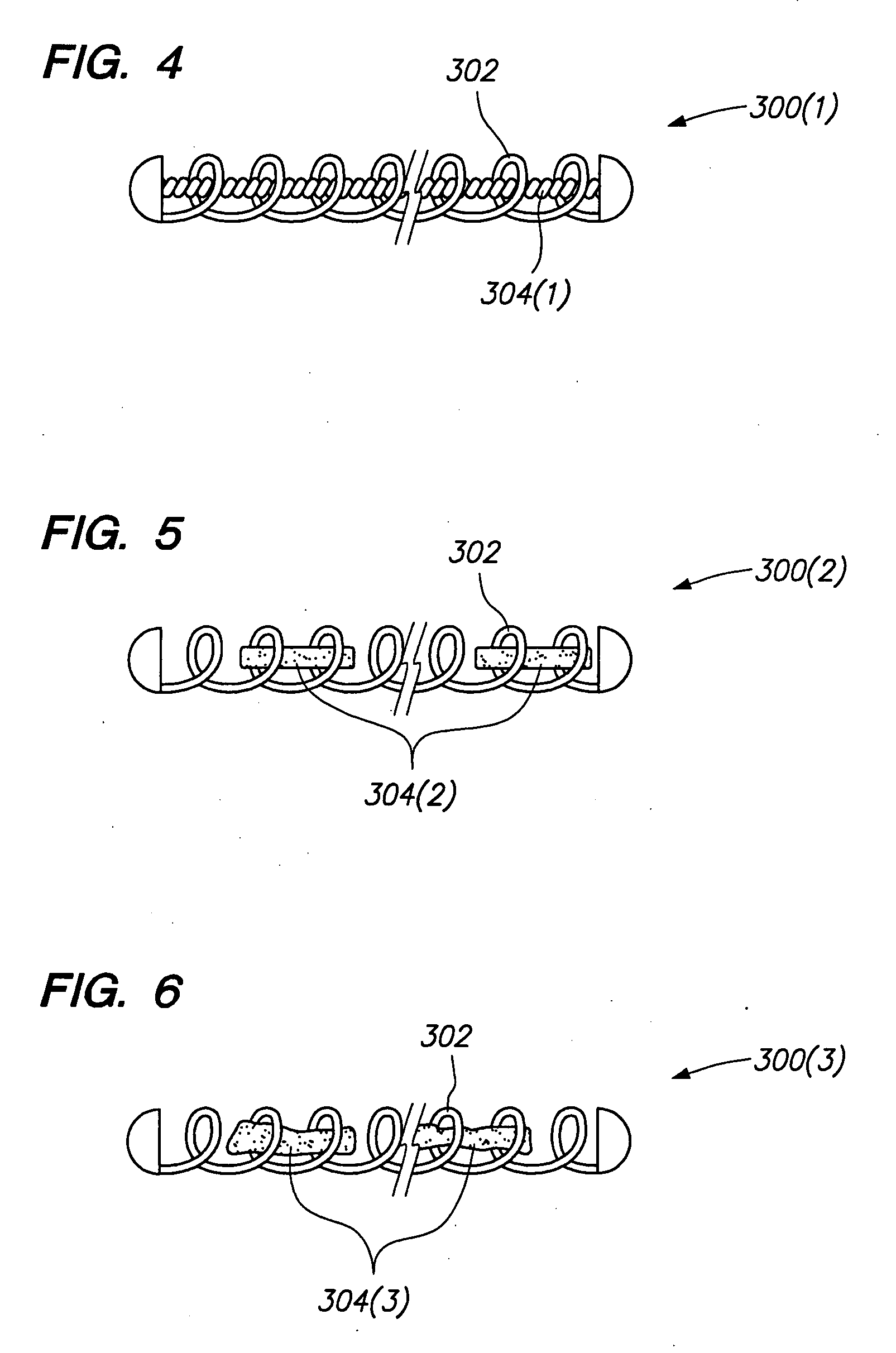Vaso-occlusive devices with in-situ stiffening elements
a technology of in-situ stiffening elements and vaso-occlusive devices, which is applied in the field of medical devices, can solve the problems of significant bleeding, damage to surrounding brain tissue or death, and difficulty in treating intracranial aneurysms
- Summary
- Abstract
- Description
- Claims
- Application Information
AI Technical Summary
Benefits of technology
Problems solved by technology
Method used
Image
Examples
Embodiment Construction
[0023] Delivery of a Bioactive Agent
[0024] In accordance with one aspect of the invention, the vasso-occlusive device 10 of FIG. 1 is provided with an agent carrier 14 carried by the coil 12. The coil 12 is made from a linear element 16, such as a wire, which preferably has a circular cross-sectional shape. In alternative embodiments, the linear element 16 of the coil 12 may have a rectangular, triangular, other geometric cross-section, or an irregular shaped cross-section. The coil 12 includes one or more loops or windings 18 formed by the linear element 16. The loops 18 define a central lumen 20 in which the agent carrier 14 is placed. In the illustrated embodiment, the vaso-occlusive device 10 has an overall diameter or cross-section which is preferably in the range of 0.010 to 0.023 inches. However, the vaso-occlusive device 10 may have other diameters and / or cross-sections, as well.
[0025] The vaso-occlusive device 10 may optionally include one or more end caps 22 secured to a...
PUM
 Login to View More
Login to View More Abstract
Description
Claims
Application Information
 Login to View More
Login to View More - R&D
- Intellectual Property
- Life Sciences
- Materials
- Tech Scout
- Unparalleled Data Quality
- Higher Quality Content
- 60% Fewer Hallucinations
Browse by: Latest US Patents, China's latest patents, Technical Efficacy Thesaurus, Application Domain, Technology Topic, Popular Technical Reports.
© 2025 PatSnap. All rights reserved.Legal|Privacy policy|Modern Slavery Act Transparency Statement|Sitemap|About US| Contact US: help@patsnap.com



